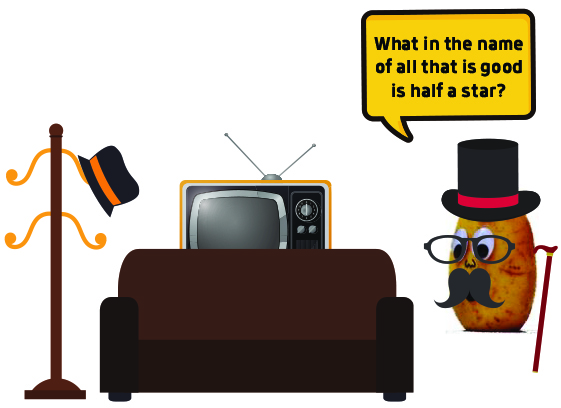What is The Sipps’ Potato Scale?
Mashed? Baked? Fried? Au Gratin?
October 8, 2019
After reading a Chuck Sipps review, you may ask yourself, “What exactly is the Sipps’ Potato Scale?” Fear not gentle reader as I, Chuck Sipps, the progenitor of the Sipps’ Potato Scale, am here to set the story straight.
Basically, it boils down to a problem that I have with most rating systems: it’s a mathematical system that doesn’t adhere to mathematical results. What I mean by that is this: can you tell me the mathematical difference between a six and seven? One. Can you tell me the difference between a six movie and a seven movie? One? You see, this is where the 10-point rating scale falls apart.
Even the 100-point rating scale is flawed. What equation determines whether a game is a 5.4 or 5.7? How about 8.8 or 9.1? There is no concrete process to support these numbers. And don’t even get me started on stars! What in the name of all that is good is half a star? I don’t know much about science or astrophysics but I’m pretty sure there aren’t half stars floating around the universe looking to reunite with their lost half.
But now that I think about it, that could be a good idea for a Netflix show. They’ll make anything these days. Did you watch “Fuller House?” Me neither. Either way, I got dibs.
I seemed to have lost the narrative there for a second, but the point is that numbers are liberally applied to reviews with no consistent formula. They don’t mean anything. They are just goobledy-gook. But people like them, so what was I to do?
Simply put, I invented the Sipps’ Potato Scale, which fully embraces the arbitrary nature of numbered reviews. The reason behind each number varies from film to film and is in no way a reflection on that film’s quality. I won’t spoil their meaning, as part of the fun is the discovery, but if you have any theories as to how the numerical value was decided, make sure to put them into the comment section on neiuindependent.org.









